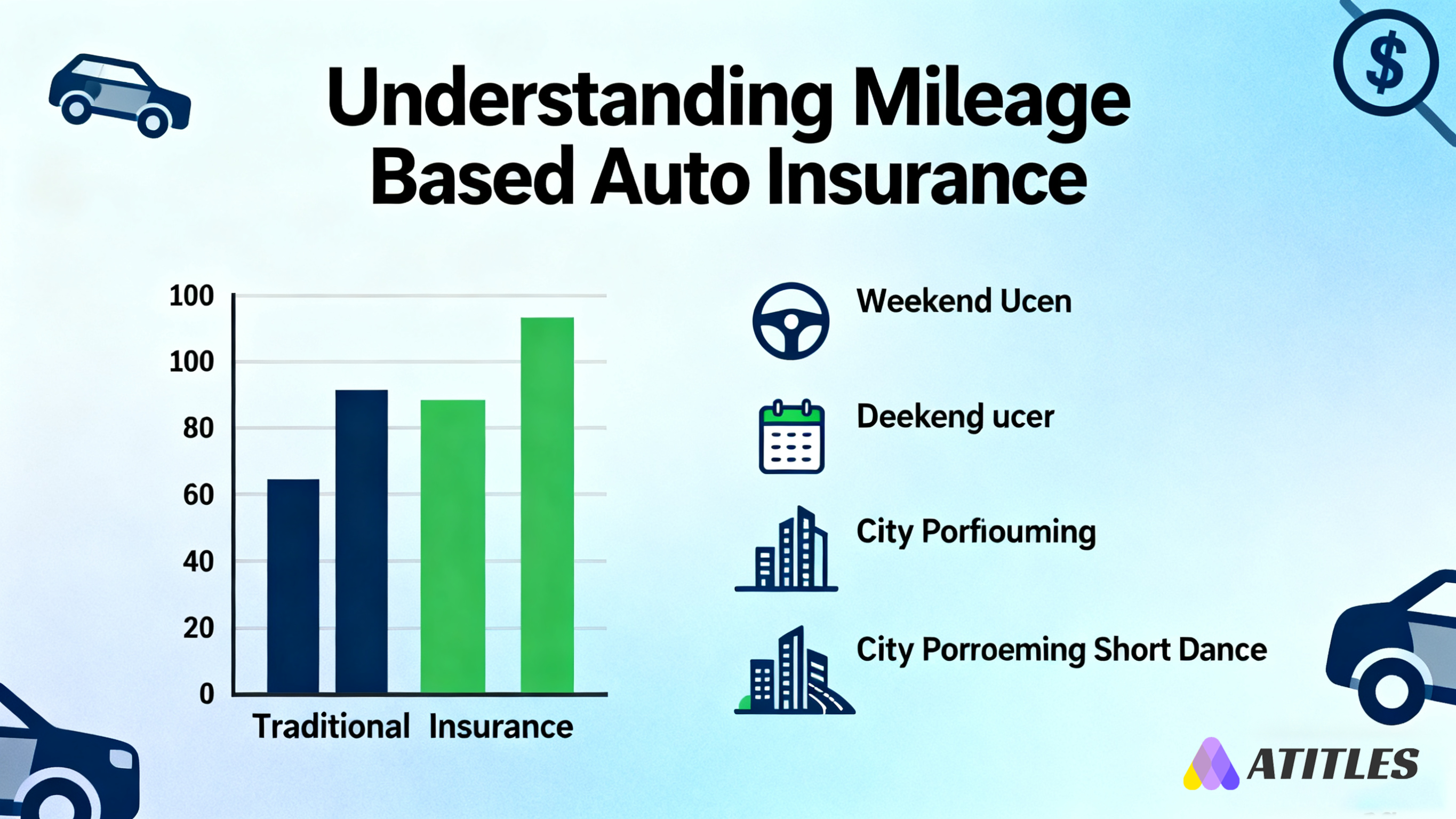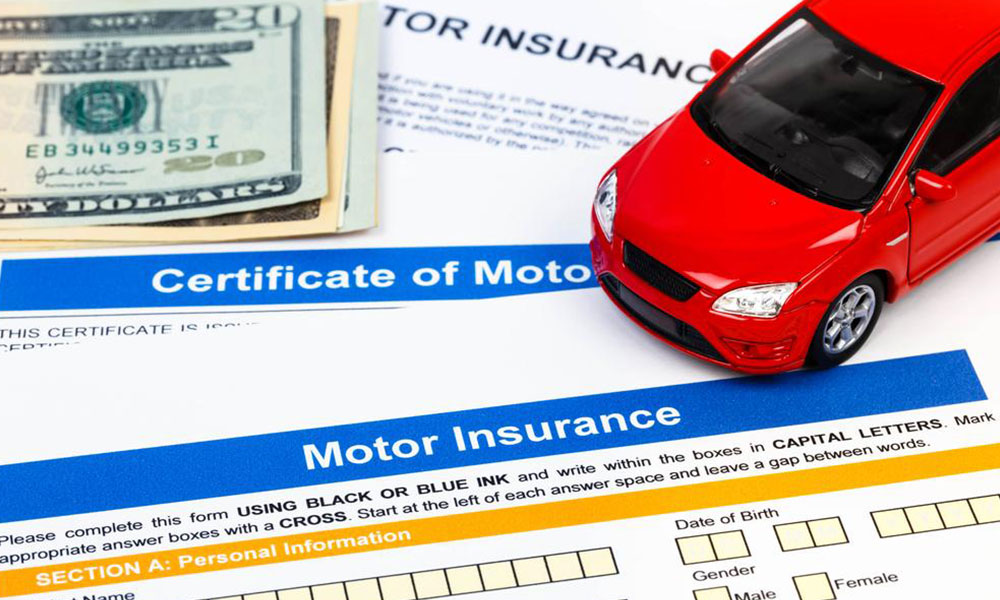Understanding Mileage Based Auto Insurance: How It Can Save Money for Occasional Drivers
This comprehensive article explores the rise of mileage-based auto insurance, detailing how tracking actual driving distances can lead to considerable savings for occasional drivers. It explains the mechanics of telematics, compares traditional and usage-based policies, and offers practical tips for choosing the right plan. Through real-world scenarios, readers learn how this innovative approach can reduce costs and promote safer driving, making it an ideal option for drivers with lower or variable mileage.

In recent years, the auto insurance landscape has undergone significant transformation, driven by technological advancements and evolving consumer needs. Among the innovative options gaining momentum is mileage-based auto insurance, a flexible coverage model designed to align premiums more closely with a driver’s actual usage. This approach has become increasingly popular, especially among occasional drivers and those with variable driving patterns, who often find traditional insurance plans to be overly expensive for their limited mileage.
Conventional auto insurance policies usually base premiums on an array of factors such as age, driving history, vehicle type, and location. While these factors are important, they often do not account for actual driving habits. This disconnect can lead to overpaying for coverage—particularly for drivers who rarely hit the road. Mileage-based auto insurance aims to address this inefficiency by utilizing advanced tracking and telematics technology to monitor real-time driving behavior, paving the way for more equitable and potentially more affordable policies.
How Mileage Tracking Works
At the core of mileage-based auto insurance is the concept of accurate mileage tracking. Insurance providers typically offer this through two primary methods: GPS-based telematics devices or smartphone applications. When a driver enrolls in a mileage-based policy, they usually receive a device installed in their vehicle or download an app that tracks their trips. These tools gather data on when, where, and how far a driver has traveled, providing insurance companies with precise usage metrics.
For instance, a GPS telematics device continuously records distances traveled, along with other driving behaviors such as acceleration, braking, and cornering. Alternatively, smartphone apps leverage location services to track trips, offering a convenient and less intrusive method. The collected data is then securely transmitted to the insurer's platform for analysis. The overarching goal is to monitor the amount of miles driven accurately while respecting privacy concerns.
By continuously monitoring these parameters, insurers can calculate premiums based on actual driving patterns, enabling a fairer and more transparent pricing model. Drivers, in turn, gain clarity on what factors influence their rates and have the opportunity to adjust their habits to optimize savings.
Benefits for Low or Occasional Mileage Drivers
For drivers who don’t use their vehicles regularly—say, commuting under 5,000 miles annually or only taking occasional trips—the traditional insurance models often lead to higher premiums relative to their actual risk exposure. Mileage-based policies, however, present a compelling alternative.
One of the most significant advantages is the potential for substantial cost savings. Since premiums directly correlate with the number of miles driven, such drivers can avoid paying for coverage they don’t need. This is especially pertinent for retirees, rural residents, or urban dwellers who mainly rely on alternative transportation or only occasionally need a car.
Moreover, mileage-based insurance can incentivize safer driving behaviors. As these programs often include telematics that monitor acceleration, braking, and cornering, drivers become more aware of their habits. This awareness can lead to improved safety and fewer claims, further reducing costs.
Another benefit is increased transparency. Drivers receive regular updates on their driving data and costs, making it easier to understand what influences their premiums. Furthermore, this model can appeal to environmentally conscious drivers by promoting reduced mileage, which aligns with broader societal goals related to sustainability.
Comparing Mileage-Based Policies to Traditional Auto Insurance
While traditional auto insurance has been the industry standard for decades, mileage-based policies introduce a paradigm shift. In typical plans, premiums are calculated based on static risk assessments, which may overlook the actual driving behaviors or patterns of individual drivers.
In contrast, mileage-based auto insurance offers a dynamic and personalized pricing structure. For drivers who put minimal miles on their vehicles, the savings can be significant. Conversely, for high-mileage drivers, traditional policies often result in higher premiums, whereas usage-based models can be adjusted to reflect actual mileage, avoiding overcharging.
Several studies indicate that drivers who opt for mileage-based policies experience an average reduction of 20-30% in their premiums, especially those with low annual mileage. Additionally, the granularity of data collected through telematics can help identify risky behaviors, allowing for targeted safety interventions and potentially lower payouts for insurers. This, in turn, benefits responsible drivers by keeping premiums competitive.
However, it's essential to understand that mileage-based policies may involve additional considerations, such as the installation of tracking devices, privacy concerns, and coverage options tailored to individual driving needs. Therefore, prospective policyholders should carefully evaluate the trade-offs between potential savings and privacy or coverage preferences.
Key Considerations Before Switching
Transitioning to a mileage-based auto insurance policy requires thoughtful deliberation. Drivers should consider various aspects, including the reliability and privacy of tracking methods. For instance, GPS telematics provide precise data but may raise privacy concerns for some users, while smartphone apps are more convenient yet might be less accurate if multiple family members share a device.
Coverage options are another critical factor. Not all mileage-based policies offer the same level of protection, so drivers must ensure that the policy’s coverage suits their needs—whether they require comprehensive protection, collision coverage, or roadside assistance. Some insurers also offer tiered plans, allowing drivers to choose based on their estimated mileage and driving behavior.
Moreover, understanding how premiums are calculated and what factors influence rates is vital. Some policies might penalize risky driving behaviors or provide incentives for safe driving—thus, drivers who adopt good habits can potentially lower their costs further.
It’s equally important to assess the contractual terms, such as minimum mile requirements, cancellation policies, and any additional fees associated with tracking devices or app usage. Shopping around and comparing multiple insurers can help find the most cost-effective and flexible option tailored to personal driving patterns.
Real-Life Scenarios Demonstrating Potential Savings
To illustrate the real-world impact of mileage-based auto insurance, consider the case of Sarah, a retiree living in a suburban area. She drives fewer than 4,000 miles annually, primarily for grocery shopping and visiting friends. Under a traditional policy, she paid approximately $1,200 per year. Upon switching to a usage-based plan with mileage tracking, her premium dropped to around $700, saving her nearly $500 annually. This substantial reduction made a meaningful difference to her fixed income.
Similarly, Jake is a city dweller who only uses his car for weekend trips. He initially paid high premiums with a standard policy due to his vehicle being classified as high-risk based on location. After moving to a mileage-based policy and demonstrating low weekly mileage, his rates decreased by 35%, providing him with both savings and peace of mind.
These examples highlight how accurate usage data can lead to fairer premiums, rewarding responsible drivers and encouraging safer driving practices overall. It also underscores how drivers with sporadic or limited vehicle use can significantly benefit from switching to mileage-based insurance.
Tips for Choosing the Right Mileage-Based Policy
Selecting the most suitable mileage-based insurance policy involves examining several factors. First, evaluate the tracking method—whether a device installed in your vehicle or a smartphone app—that aligns with your comfort level regarding privacy and convenience. Test the accuracy of tracking options before committing.
Next, compare coverage options and premium rates across multiple insurers. Look for policies that offer comprehensive coverage, good customer service, and transparent terms. Pay attention to any additional fees for tracking devices or app usage.
Consider your driving habits—if you frequently drive long distances, a policy with a higher mileage allowance or flexible terms may be advantageous. Alternatively, for drivers with very low mileage, policies designed specifically for minimal usage can maximize savings.
Furthermore, read reviews and consult with insurance agents to understand the insurer’s approach to data privacy and how they handle potential disputes or claims related to telematics data.
Finally, assess your willingness to adapt your driving habits if it results in further discounts. Responsible driving behaviors such as smooth acceleration and adherence to speed limits can influence premium calculations positively.
Conclusion
As the auto insurance industry continues evolving, mileage-based auto insurance stands out as a compelling option for specific driver profiles—particularly those who drive infrequently or have variable mileage patterns. By aligning premiums more closely with actual usage, this model offers the potential for significant savings without compromising coverage quality.
While it requires some upfront considerations regarding tracking methods and privacy, the benefits of cost savings, personalized premiums, and incentivized safe driving make it an attractive choice for responsible and occasional drivers. As with any insurance decision, thorough research and comparison shopping are essential to find a policy that best fits your needs.
Ultimately, mileage-based auto insurance can serve as a practical, flexible, and economical solution—one that tailors coverage to your lifestyle and driving habits, ensuring you pay only for what you use.








